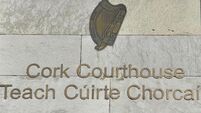Doomed jet sent message on rudder problem
A burst of automatic messages sent by Air France Flight 447 before it crashed into the Atlantic includes one about a problem with a rudder safety device, an expert said.
However, the message lacks decisive clues to what sent the jet plunging into the ocean on May 31, said the aviation official with knowledge of the Air France investigation.
The expert said a transcript of the messages posted on the website EuroCockpit was authentic but inconclusive.
One of the 24 automatic messages sent from the plane minutes before it disappeared with 228 on board points to a problem in the "rudder limiter", a mechanism that limits how far the plane's rudder can move.
The flight was heading from Rio de Janeiro, Brazil, to Paris through an area of fierce thunderstorms.
The nearly-intact vertical stabiliser - which includes the rudder - was fished out of the water earlier this week by Brazilian searchers.
"There is a lot of information, but not many clues," the official said.
He said jets like the Airbus A330 that crashed automatically send such maintenance messages about once a minute during a plane's flight. They are used by the ground crew to make repairs once a plane lands.
Martine del Bono, spokeswoman for the French investigative agency BEA, in charge of the crash probe, and Airbus spokesman Stefan Schaffrath declined to comment on the transcript.
If the rudder were to move too far while travelling fast, it could shear off and take the vertical stabiliser with it, which some experts say may have happened based on the relatively limited damage to the stabiliser.
The industry official, however, said the error message concerning the rudder limiter did not indicate it malfunctioned, but rather that it had locked itself in place because of conflicting speed readings.
Investigators have focused on the possibility that external speed monitors - Pitot tubes - iced over and gave false readings to the plane's computers.
"The message tells us that the rudder limiter was inoperative," Jack Casey, an aviation safety consultant in Washington DC, said last week when the existence of the automatic messages was first divulged.
"It tells us that for some reason it was no longer functioning. That is all the message means. It does not give you any reason why it is not working or what caused it, or what came afterwards."
Unless the plane's flight data and cockpit voice recorders - the so-called black boxes - are found, the exact cause of the accident may never be known.
A French nuclear submarine is scouring the search area in the hopes of hearing audio pings from the black boxes' emergency beacons. The first of two US locator listening devices will arrive today.
So far, there is no evidence of an explosion or terrorist act, just a number of clues that point to systemic failures on the plane.
Experts have said the evidence uncovered so far points to at least a partial mid-air break-up of the Airbus.
Military ships and planes resumed the search for bodies and debris yesterday but suspended their efforts by mid-afternoon because of bad weather conditions.
No bodies were recovered, but a "medium-sized" piece of plane debris was discovered inside the search area by the merchant ship Gammagas, flying the flag of Antigua and Barbuda.
Coroners said they would need dental records of the victims and DNA samples from relatives to confirm the identities of 16 bodies.
Authorities have retrieved 44 bodies and another six have been pulled from the Atlantic by French ships.













